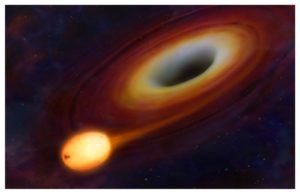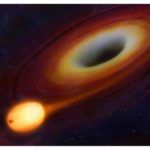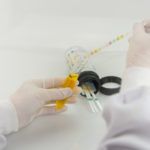Roughly one new star forms per year in our galaxy, the Milky Way, and planet formation follows. Astronomers on EU project DIGDEEP, with the support of the Marie Skłodowska-Curie programme, have discovered the discs that surround newborn stars emit winds that may help the formation of planets and their location in our galaxy.
When stars are formed there is a build-up of matter that is expelled through winds and jets. However, astronomers didn’t know whether the matter was expelled from the newborn star or from the surrounding protoplanetary disk. “The results from DIGDEEP clearly show it comes from the inner region of the disc,” says Tom Ray, professor at the School of Cosmic Physics at the Dublin Institute for Advanced Studies (DIAS). “Such disc winds alter conditions in the disc. What we want to know now is how this affects terrestrial planet formation. Winds and jets may be a vital ingredient in how planets like the Earth form.”
The research
The researcher Rebeca García López on the project DIGDEEP —supervised by Ray— studied young stars forming within 5 astronomical units from their Sun, a region containing what astronomers dub the ‘Habitable Zone’, or the ‘Goldilocks Zone’, because its distance from the sun makes it an ideal environment for life: not too hot and not too cold. The Earth, for instance, is 1 astronomical unit from the Sun.
Observing the detail of forming stars about 400 light-years away is impossible using ordinary telescopes. But García López realised she could use the interferometer GRAVITY, a sophisticated instrument she helped build and test as part of a European consortium with colleagues from DIAS. It is based at the European Southern Observatory in northern Chile.
“By linking telescopes together over a large distance (hundreds of metres), we can simulate a telescope hundreds of metres across,” says Ray. “Providing the object is bright enough, we can then resolve it and see detail within the terrestrial zone of the disc.”
Studying a sample of newborn stars allowed García López and her team to gain insight into the conditions in the terrestrial planet-forming zone in a protoplanetary disc. She used those conditions in computer simulations to replicate how planet formation takes place, gaining clues into how previous planets ended up in the Habitable Zone. “Such simulations show that disc winds make the density in the disc lower which in turn can prevent embryonic planets from migrating inwards due to drag,” says Ray. “Without disc winds, Jupiter would have ended up as a hot Jupiter or even spiralled into the Sun!”
Further out winds from the protoplanetary discs turn into jets that stretch for several light-years. We now know these jets are an essential ingredient for planet formation. “When we see a beautiful jet in a stellar nursery like Orion, it is a sign of stellar birth and also of planetary birth,” García López says.






Leave a Reply